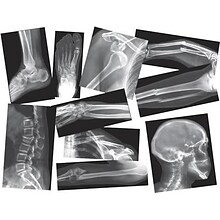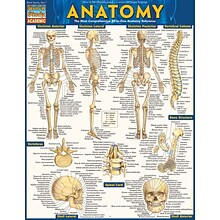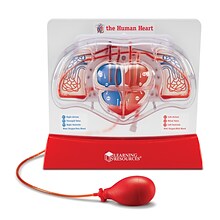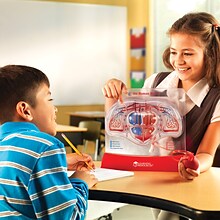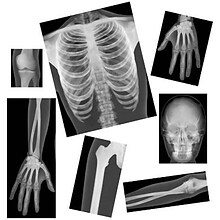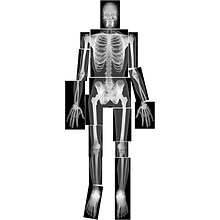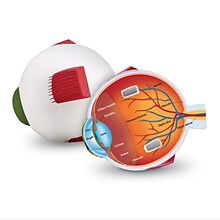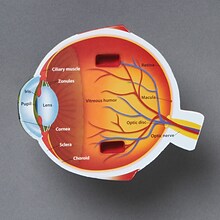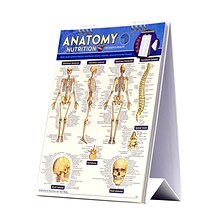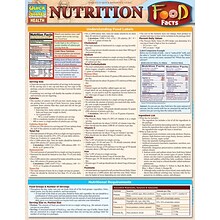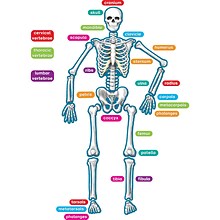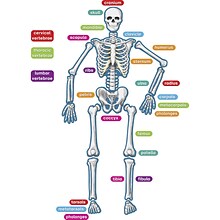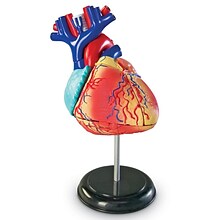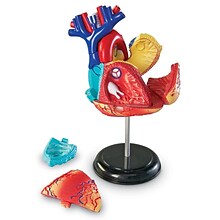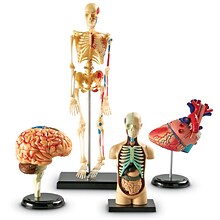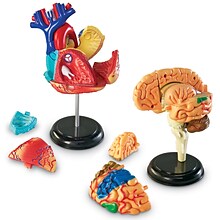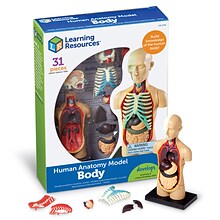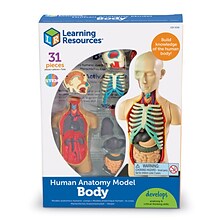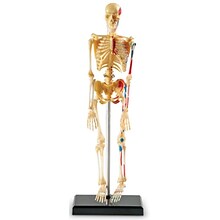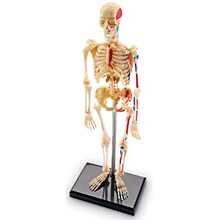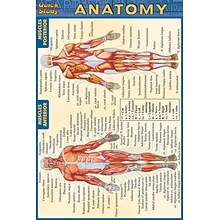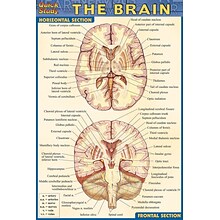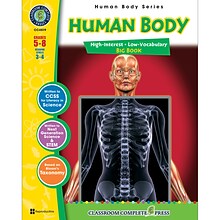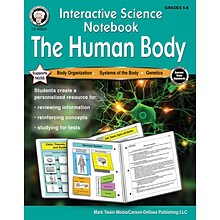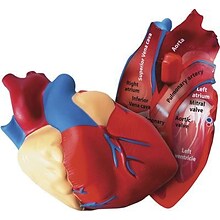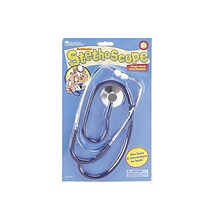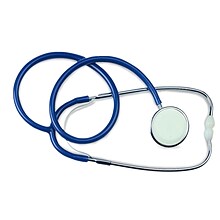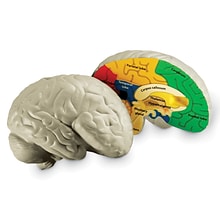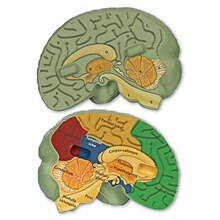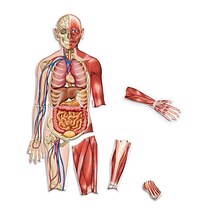>>>>>
Human Body Teaching Resources
Shop Human Body Teaching Resources
(20 Products)
Sort by:
Best match
Roylco® Broken Bones X-Rays
Item #: 901-JV34632
Age group and grade: Ages 5+ and grades pre school - 12th
Type: Human body
Useful for biology teachers, also with lots of other applications and real possibilities for artists and designers
BarCharts, Inc. QuickStudy® Anatomy Poster Reference Set (9781423230717)
Item #: 901-1932993BCE
24" x 36" Wall Reference Poster, plus 8.5" x 11" Laminated Reference - Study Guide
Higher Ed Medical - Health
Set Includes: 1-Anatomy Poster (laminated) and 1-Anatomy laminated reference guide
Anatomical Model, Flexible Spine, Classic, Male
Item #: 901-124529Q
Features male pelvis and occipital plate, L3-L4 disc prolapsed, spinal nerve exits, cervical vertebral artery.
Stand is not included.
flexible spine, classic, with male pelvis
Learning Resources Pumping Heart Model (LER3535)
Item #: 901-JV38273
Age group and grade: Ages 8 - 12 and grades 3rd - 7th
Type: Human body
Hand pump model highlights basic heart and pulmonary blood flow using water and hand pump
Roylco® True To Life Human X-Rays
Item #: 901-JV37166
Age group and grade: Ages 4+ and grades kindergarten - 3rd
Type: Human body
Hold these life size human X-rays up to the light or use them on a light table and see every authentic detail of a real skeleton
Learning Resources Cross Section Eye Model (LER1907)
Item #: 901-JV34959
Age group and grade: Ages 7 - 11 and grades 2nd - 4th
Type: Human body
Teaching your students about the complexities of the human body is easy with these cross-sectioned models that come apart for hands-on classroom demonstrations
BarCharts, Inc. QuickStudy® Anatomy & Nutrition's Easel Reference Set (9781423230502)
Item #: 901-1932985BCE
8.5" X 11" Flip Desk Top Reference, plus 8.5" x 11" Laminated Reference - Study Guide
Higher Ed Medical - Health
Set Includes: 1-Anatomy & Nutrition Easel Flip guide and 1-Nutrition-Food Facts laminated reference guide
Teacher Created Resources, Human Skeleton Magnetic Accents, 40 Total Pieces (TCR77241)
Item #: 901-JV2323407
Magnetic backing provides reusable display options on compatible surfaces
Large, colorful design is highly visible to stand out in your classroom
Labels showcase names of each part to teach students about skeletal system
Learning Resources Heart Anatomy Model (LER3334)
Item #: 901-JV44301
Age group and grade: Ages 8 - 11 and grades 3+
Type: Human body
Features superior and inferior venae cavae, right and left atria, tricuspid valve, right and left ventricles, pulmonary artery, mitral valve, aortic valve and aorta
Learning Resources Anatomy Models Bundle, Set of 4 (LER3338)
Item #: 901-JV44305
Age group and grade: Ages 8 - 11 and grades 3+
Type: Human body
Students manipulate the inner workings of the human body as they build the models, gaining a deeper understanding of how organs and systems interact
Learning Resources Human Body Anatomy Model (LER3336)
Item #: 901-JV44303
Age group and grade: Ages 8 - 11 and grades 3+
Type: Human body
Using the photo illustrated instructions, students assemble this realistic, 31 piece model and gain a hands on understanding of how organs and systems interact
Learning Resources Skeleton Model (LER3337)
Item #: 901-JV44304
Age group and grade: Ages 8 - 11 and grades 3+
Type: Human body
Construct a realistic looking human skeleton from head to toe, exploring how the bones support the body, relate to the circulatory system and protect organ systems
BarCharts, Inc. QuickStudy® Anatomy 4x6 Pocket Reference Set (9781423230410)
Item #: 901-1932915BCE
4" x 6" Pocket Laminated Reference - Study Guides
Higher Ed Medical - Health
Set Includes: 1each of Anatomy, Brain, Circulatory System, Digestive System, Heart, Joints & Ligaments, Muscular System, Nervous System, Respiratory System, Skeletal System, Vitamins & Mineral 4X6 laminated reference guides
Classroom Complete Human Body Big Book
Item #: 901-JV35563
Age group and grade: Ages 10 - 14 and grades 5th - 8th
Type: Human body
Helps in understanding fundamentals of human body
Interactive Science Notebook The Human Body Resource Book by Schyrlet Cameron, Paperback (405030)
Item #: 901-24389110
Mark Twain Media 2019
Schyrlet Cameron
64 pages in paperback format
Learning Resources Cross Section Human Heart Model
Item #: 901-JV34962
Age group and grade: Ages 7 - 12 and grades 2nd - 5th
Type: Human body
Teaching your students about the complexities of the human body is easy with these cross-sectioned models that come apart for hands-on classroom demonstrations
Learning Resources Stethoscope, 1" x 7 3/16" x 11 3/8" (LER2427)
Item #: 901-JV36869
Type: Experiments
This working stethoscope actually lets children hear their own heartbeats
Size: 29"(L)
Learning Resources Cross Section Human Brain Model (LER1903)
Item #: 901-JV34961
Age group and grade: Ages 7 - 11 and grades 2nd - 5th
Type: Human body
Child understand the complexities of the human brain is easy with this labeled cross section model
Learning Resources® Double Sided Magnetic Human Body
Item #: 901-JV51802
Magnetic human body
Age group and grade: Ages 5+ and grades K+
Supports demonstrations, centers and more
Learning Resources Brain Anatomy Model (LER3335)
Item #: 901-JV44302
Age group and grade: Ages 8 - 11 and grades 3+
Type: Human body
Features cerebellum, frontal, parietal, temporal and occipital lobes, corpus callosum, brain stem, hippocampus, ventricles, insula, corpus striatum, internal capsule and lentiform nucleus
